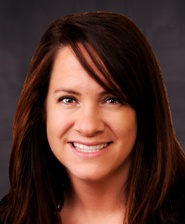Digital Mammography – Further confusion for women
Reading Time: 3 minutes read
Guest post: Emily Crane, Research Director, KLAS
Recently Newsweek ran a story proposing that digital mammography has no added benefit to plain film mammography for women 65 years of age and upward. I had a very strong emotional reaction to this story initially given the large amount of focus and research I do within the realm of women’s imaging as well as due to the fact that I have a mother who falls in to this category. I also know that there is a great deal of confusion in healthcare right now in this space. I’d like to share a few thoughts on the article and hopefully provide some insight to women who fall within this category.
Digital mammography is a proven life saver. Breast cancer is most treatable when detected early. Digital mammography offers a treating physician the ability to more clearly discern any possible lesions in the breast using digital manipulation as well as CAD. It also allows for mammograms to be more easily transmitted to referring physicians. Digital mammography also provides the radiology technologist with an instant image to ensure that the best image was taken. All of these benefits that digital mammography provide allow for lesions to be detected when they are smaller and more easily treated.
A few years ago my mother was diagnosed with a lump in her breast only found by palpitation. Once the physicians knew where to look for it was visible on the plain film mammograms going back several years. As it was still very difficult for the physicians to know much about the lump they had found in my mother the proposed next step was a surgical removal of the lump. As a precaution we opted to gather her plain films and meet with our local cancer center. Their immediate recommendation was that we obtain a digital mammogram. Once they had reviewed the digital mammogram they knew more about the lump and could also tell that a needle biopsy was possible. The results of the needle biopsy showed no cancerous tissue and they recommended monitoring the lump. Since then the lump has dissipated and we were able to dodge an unnecessary surgery as well as any possible side effects of surgery.
Recently, we published a very comprehensive study on women’s imaging and I had the opportunity to speak with numerous healthcare providers passionate about this area. Not one recommended moving backwards in technology for these women. In fact, these healthcare providers dedicated to women’s imaging are pushing for additional resources to help them in their battle to protect women against breast cancer. I am personally in debt to their dedication to this area and strongly opposed to any limitation of digital mammography. I am disappointed at Newsweek’s lack of concern for the women of this country and for their willingness to add to confusion in an already difficult area of medicine. To those of you dedicated to improving our ability to save women’s lives I thank you.
For any questions about the research that KLAS has done in Mammography don’t hesitate to email me: Emily.Crane@klasresearch.com
– Emily Crane, Research Director, KLAS
Editor’s Note: The views expressed by guest bloggers are soley those of the author, and do not necessarily reflect those of Carestream Health.

Q8PACS Admin
I’m a big supporter of digital acquisition including mammography if it’s supported by evidence. However, we have a special case in Kuwait. Since introduction of digital modalities, QC procedures are either gone with winds or they are still same as old procedures using film-screen bases. This means, that no QC procedure is done for reporting Workstations or digital detectors.
In that case, do you think that we should still switch to digital world or we continue with analogue (which we no very well) until we build our digital QC regulations and procedures?
carestreamhealth
Great point! I believe they should institute a QC program for the workstation as outlined by the workstation vendor, phantoms are available on line. Calibration of the monitors is critical. They should also institute a QC program as outlined by the FFDM manufacturer, most of which have phantoms and calculations with the unit and offer excellent assistance with applications training.
Thanks for your comment.
– Anne Richards, Clinical Development Manager, Women’s Health, Carestream